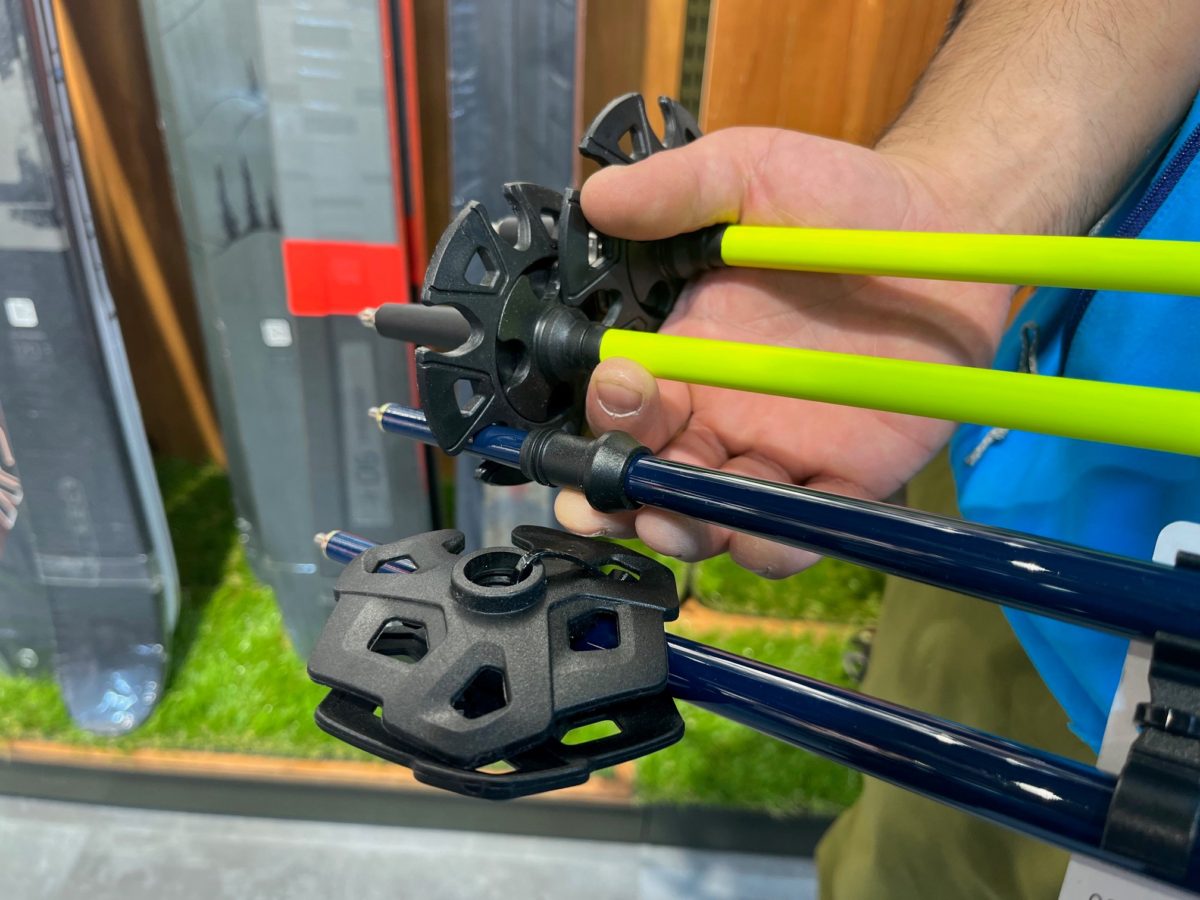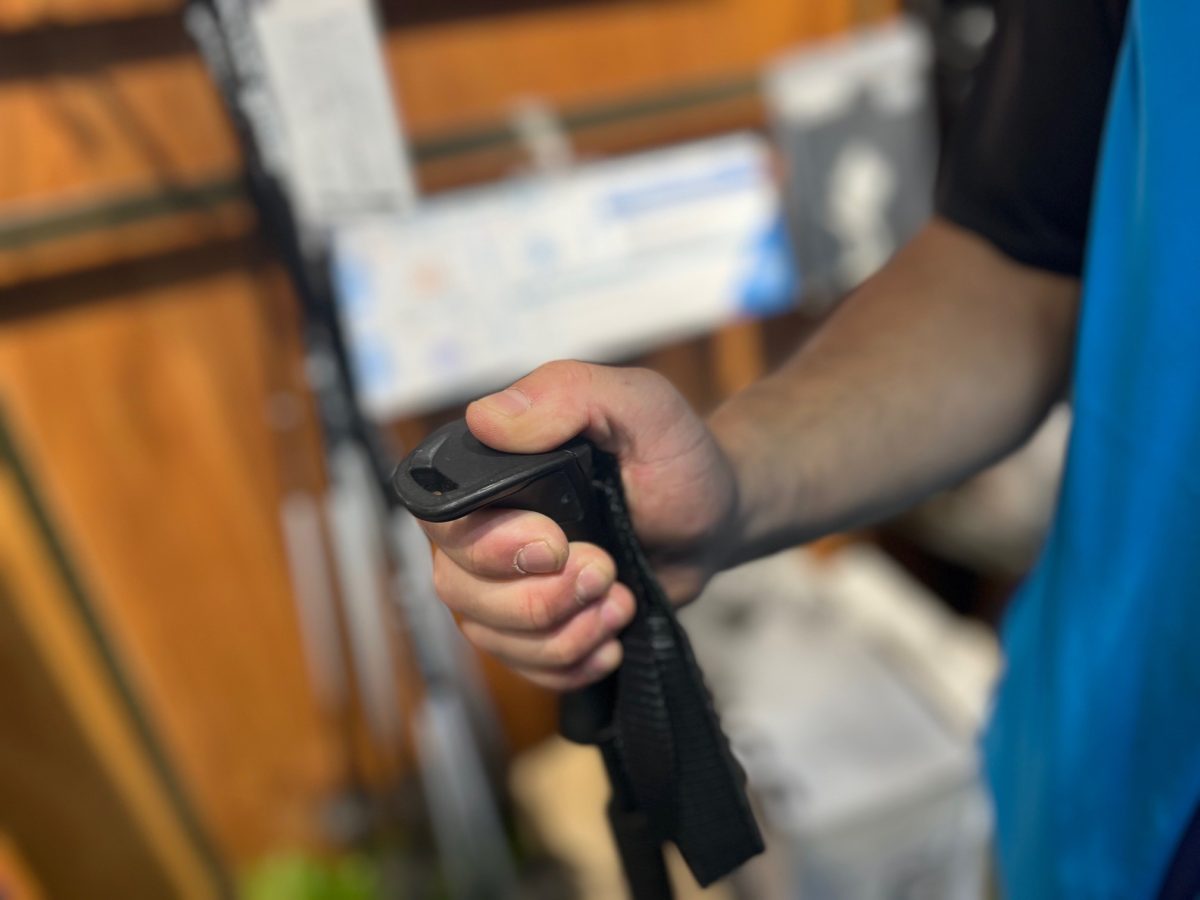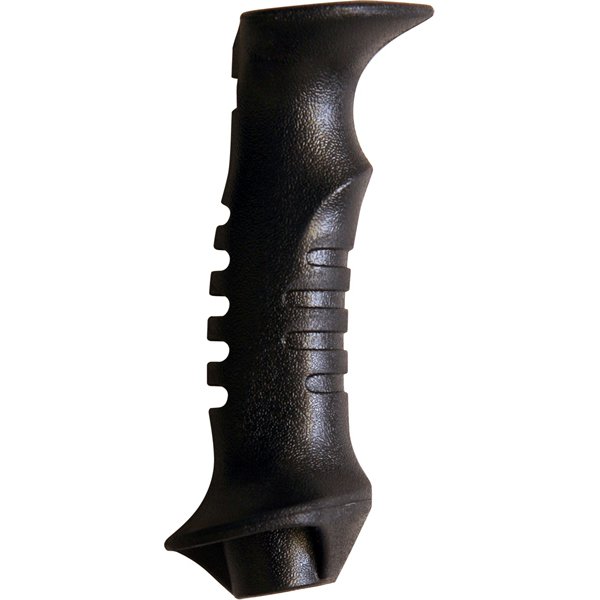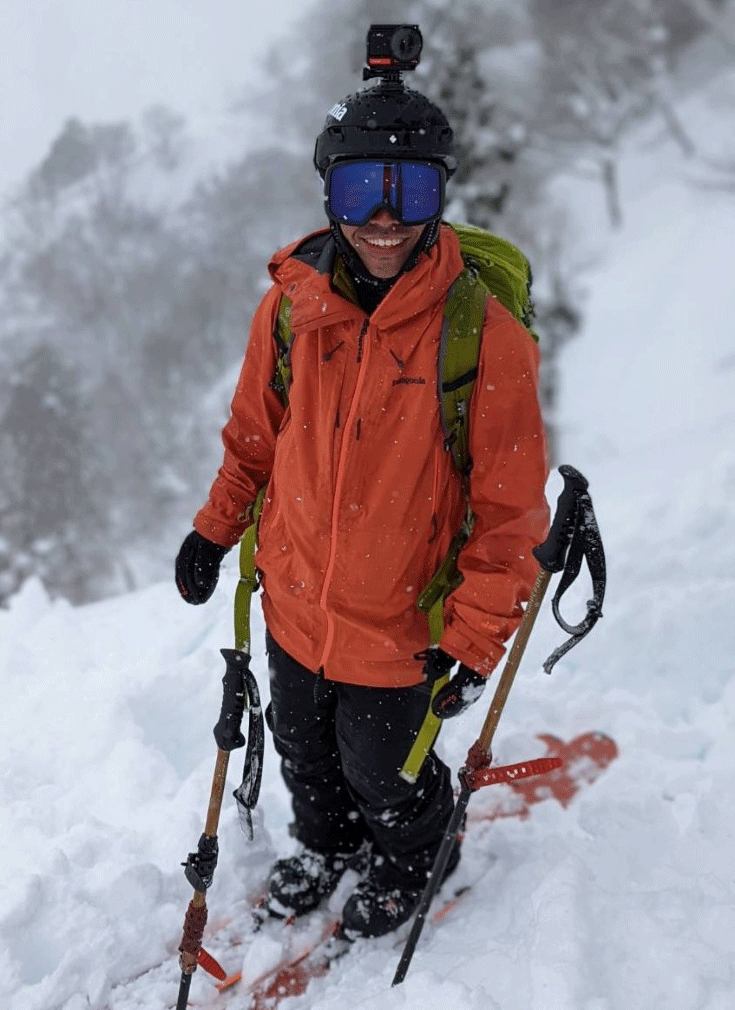Skier: Yuki Amari Photo: Takahiro Oshio
When it comes to gear selection, skis and boots tend to be the focus, but ski poles are one of the most important pieces of equipment in the backcountry (BC). Nature's BC also uses it in a completely different way from the slopes. So, I asked Mr. Amari of Ishii Sports, who has experience in BC and extensive knowledge about gear, how to choose and use poles.
The role of poles in the backcountry

Many skiers ski without poles on park rides, but poles have many roles in BC. For example, like this...
・To gain propulsion
balance when skiing
・To avoid being buried in powder when
operations such as binding
・Sometimes used as a probe for avalanche gear
Especially in the backcountry, including climbing, poles are essential and play an important role related to safety.
pole structure
The structure of the pole is as follows. Let's review the names of each part and the parts to pay attention to when using BC...

grip
shape and material make a big difference in how you feel when you hold it. Many of them are ergonomically designed for ease of grip, but there are also grips that are designed with mitten gloves in mind, and that are designed with swings in mind when skiing. The main material is lightweight thermoplastic polyurethane). In order to increase the grip, there are also those that use a soft material called elastomer, which has elasticity like rubber.
part that greatly affects the swing weight and balance depending on the shaft
Joints
are broadly classified into telescopic types and fixed types. In addition, there are two types of locks for telescoping types.
basket
backcountry or powder, if the size and shape of the basket are not suitable, it will be difficult to climb and ski. It is a little inconvenient for slope use.
Point of selection of pole
I asked Mr. Amari what points to make when choosing poles.
“Many poles that are intended for use in the backcountry have models that can be used as probes if necessary, or stretchable styles that allow you to adjust the length according to the depth of the powder. Shafts Durability, weight, and operability will also differ depending on the material of the grip.There are various shapes and materials for the grip, and of course, the one that fits your hand is good.
Depending on the user's skiing style, I think that the appropriate pole for that person will change. However, the reality is that at first you don't really know what really suits you. It is necessary to actually use various things and try to raise the experience value. It's rough, but if you keep these two points in mind, you can put it in BC.
①Equipped with a snow basket ②Equipped with a
length adjustment function
With that in mind, here are my picks:
Alpine skiers, who have basic skis in their backbone, place considerable importance on stockwork that moves the wrists and elbows as fulcrums. So, I think that a model with a lighter stock swing weight or a model with a taper at the tip (the diameter and thickness are tapered) feels better.
We consider that skiers who have free skiing as their backbone tend to ski skillfully using what is called rotation movement in skiing techniques. So, I think stock with a low center of gravity where the ring slowly comes forward is a better match.
Check the points of each part!
"Lock" length adjustment function
Clip lock type ( that snaps with a clip)
There are "plastic" and "aluminum" types for the parts of the lock part of the clip lock type, but the aluminum type is by far the stronger. The plastic type has a risk of cracking when a strange load is applied. The clip type is harder to break than the twist type.
Twist lock type (type to turn and tighten)
The twist lock has a smaller locking mechanism than the clip lock, so the swing balance of the stock itself is excellent. It can also cause the length to change.
pole length
As for the standard length, if you calculate based on a general index, you should use this as a standard to find the length you like when you ski. Taking my pattern as an example, I value "slipping in powder just like on the slopes", so my height is 157cm and the stock length is 107cm. I think it's generally used a little shorter.
When hiking up, it's easier to handle if you adjust it a little longer, so I adjust it about +5 cm longer before climbing.
basket size
A powder basket is a must in the coldest of winters. Without this, the pole will dive into the snow. Also, in the backcountry, if the basket isn't the right one, you won't be able to catch the snow when climbing, making it difficult to walk. The first choice is to choose the type of "powder basket" or "wide basket" in the manufacturer's notation.

On top of that, even for powder, there are soft and hard materials depending on the material, and there are various shapes. The feeling of swinging and the feeling of use when you hit it are also different, so I think you'll have to decide what you like.
length of stump
Some people stick to the length of the ferrule from the snow basket to the tip. In BC, I think it would be more convenient to have a certain length so that it can be used for climbing and attaching/detaching the bindings.
Shaft material

The shaft part requires moderate weight and durability. The material is basically aluminum or carbon. The back of the photo is an aluminum shaft, and the front is a carbon shaft.
However, there are various types, and their characteristics differ depending on the material.
Aluminum: Varies, but high-end models are stronger.
Racing models use more aluminum. Carbon: Light, the shaft can be molded thin, so the swing is light.
Excellent shock absorption. Bamboo: Light and cool looking.
Recently, even carbon poles have aluminum alloy reinforcement inside, and to be honest, there are many things you can't understand unless you cut the stock in half! (laughs) There are many mountain ski models that combine strength and balance by using different materials for the upper and lower shafts.
price
As for the price, it will inevitably be an expensive model if it is chosen with commitment. (Higher models are easier to get off, and there is less stress on your hands even if you are hiking), but anyway, it would be nice to be able to use it in the mountains! I don't think the customer needs an expensive model that far. Just because it's a cheap model doesn't mean it's fragile!
My focus is on the "grip"
What I am particular about when choosing poles is the grip in particular. Because the main purpose is to "slide the same as the slope".

The shape of the grip is roughly divided into 3 patterns depending on how the pole is held.
1) Thumb index finger type
2) Little finger middle finger index finger type
(3) Put your thumb over
the grip head. This grip is just right for me because my hands aren't big, and it has a grip head shape that makes it easy to put my thumb over.
When skiing for a long time like "top to bottom", if you don't pay attention to this, your arms will pump and you won't be able to do stock work to ensure balance and timing. In the worst case, you may even drop the pole.
Therefore, I am using a modified grip called KG-M from Kizaki. I love this grip because it's easier to keep my balance when I hold my thumb on the top of the grip, and it fits my not-so-large hand the best.


Photo: Ryota Takanezawa
My favorite pole base is "Compadel|CARBON CLOUD BAMBOO VARIO", but I changed the grip to Kizaki's "KG-M".
The genuine grip is made of leather and looks cool, but it's too big and it's hard to put my thumb on it, so I changed it to "KG-M". The grips are also sold individually, and the lineup includes four sizes: 11, 14, 16, and 18 mm, so I think most poles can be used.
Since the length range is from 110 cm, I cut the pole short and use it.
If a BC beginner buys it first, this is recommended! model
The most recommended is "Black Diamond Laser Carbon Pro". I don't think it will fail as the first one in terms of cost performance, performance, and ease of handling.
Blackdiamond| Laser Carbon

laser carbon propor
High-spec pole with excellent swing balance and various functions. A lightweight and robust two-piece structure that combines a 14mm diameter aluminum shaft and a 12mm diameter carbon shaft. Equipped with a switch release strap that can be released in an emergency.
Flick Lock Pro keeps it firmly in place after adjustment. Comes with a convenient grip ring for traverses.
Weight: 524g (100-125cm)
542g (115-140cm)
Size: 100.115cm
¥25,300
If an experienced person buys the next book, this is it! (Mr. Amari's recommendation)
Compardell | CARBON CLOUD BAMBOO VARIO
Other than looks, balance, and price, it's the best! CARBON CLOUD BAMBOO VARIO stock that has been updated repeatedly with running changes while maintaining its appearance

CARBON CLOUD BAMBOO VARIO
A unique pole with a nostalgic look and high-tech performance. The upper part of the shaft is carbon reinforced with bamboo, and the lower part is made of titanium material for extreme lightness and excellent swing balance. 40% lighter than regular carbon poles. Komperdell is the only manufacturer that manufactures its own carbon and carbon poles.
¥36,300
◆Official HP/ http://www.vist.co.jp/
summary
Finally, Mr. Amari taught me the "liver" of pole selection.
“When choosing poles, consider the material, functionality, and usability, as well as the price and appearance. . This is because poles are gear that can be used for a long time, and I think that "attachment" is the most important thing.
I think that "use good gear with attachment for a long time" We skiers and snowboarders, who directly feel the effects of "climate change" and "environmental problems" through the filter of mountains, have also shifted the way we think about the equipment we wear. You can also think that the model does not change = it does not go out of fashion. Everyone, please choose "one that only increases attachment every time you travel"! ”
the person who taught me
Yuki Amari
[Profile]
Ishii Sports Kofu store staff.
Climbing from spring to autumn, he pursues mountain skiing and mountain skiing from winter to spring. A mountain specialist who works in the mountains according to the rhythm of the four seasons. Climbing on Mt. Mizugaki and Mt. Ogawa in the summer. In winter, I often go backcountry in Niigata and Nagano. His favorite mountain is Yatsugatake. I don't have a life goal like him right now, but my current goal is to play in the mountains even after I become a grandpa (laughs).


